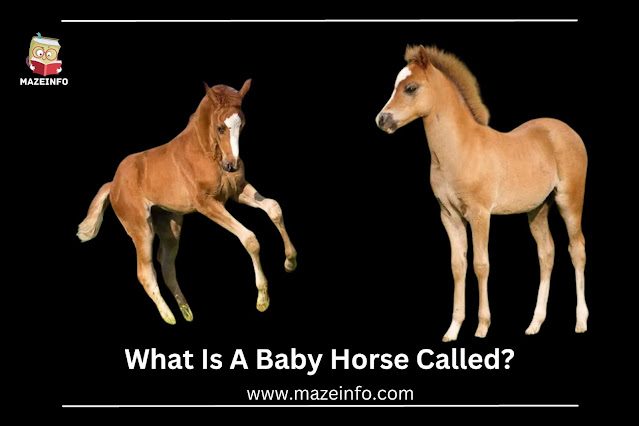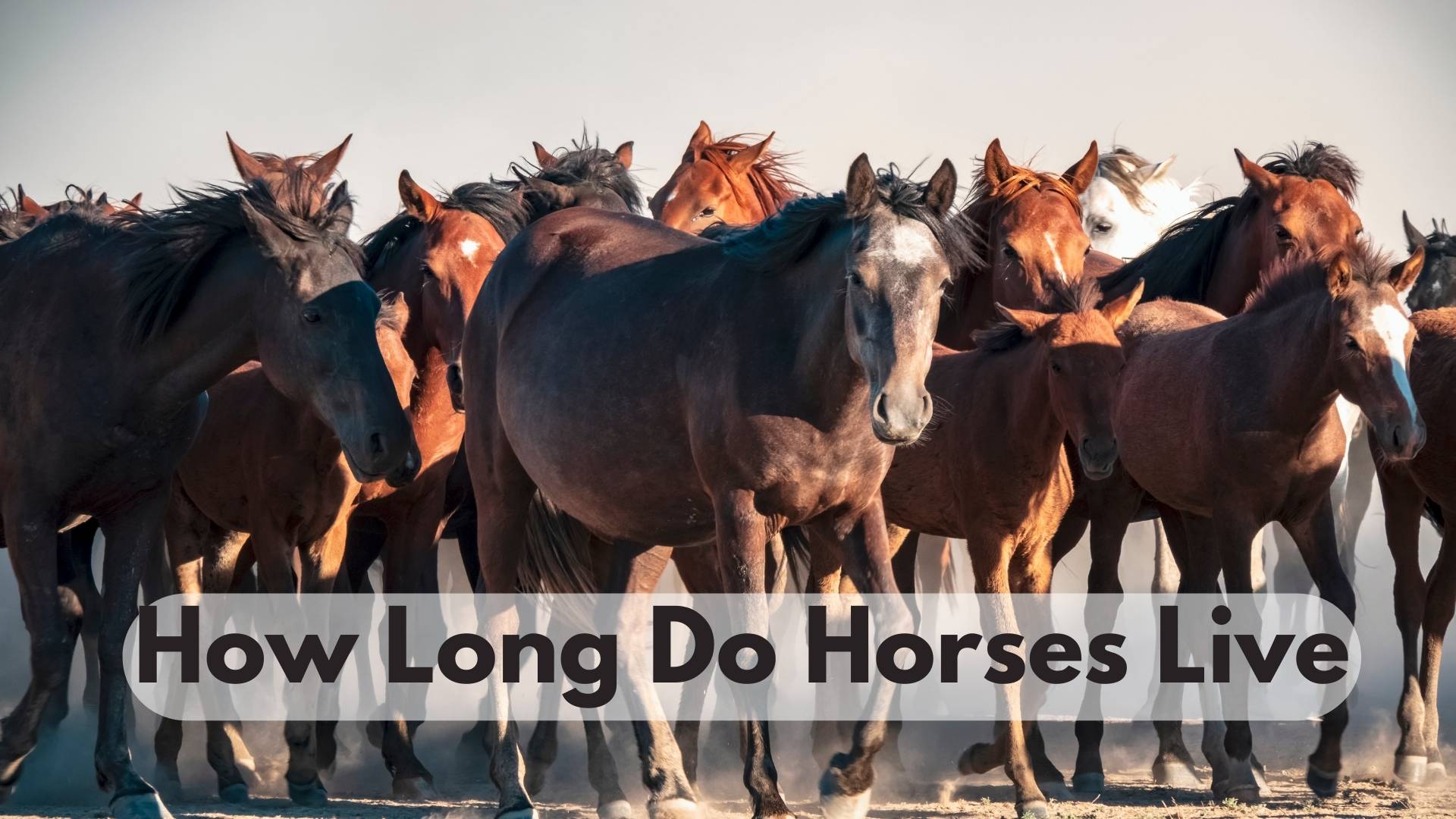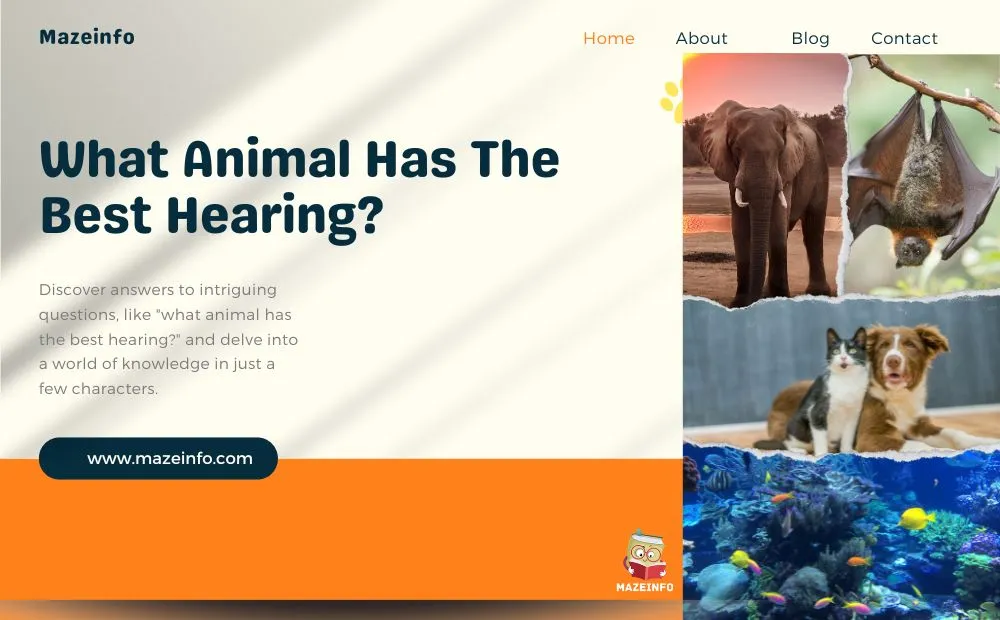Introducing the world of equine wonders, one of the most enchanting and endearing creatures to grace our planet—the baby horse. In the vast realm of the animal kingdom, these captivating newborns possess a charm that captures the hearts of onlookers and ignites a sense of wonder. Known by a special name that adds a touch of magic to their existence, these adorable beings are referred to as foals. Join us on a journey into the realm of these spirited youngsters, as we explore the intricacies of their early days and the unique qualities that make them a cherished part of the equestrian world. From their delicate features to their boundless energy, the story of a baby horse, or foal, is a tale that unfolds with innocence, grace, and a promise of untold adventures.
A baby horse is called a foal.
What To Call A Baby Horse?
A baby horse is commonly referred to as a “foal.” The term “foal” is used to describe a horse that is less than a year old. The word can be used for both male and female young horses. The term is widely accepted in the English language and is commonly used by horse enthusiasts, breeders, and in general equestrian contexts.
When discussing the sex of the foal, specific terms can be used
Colt: A male foal.
Filly: A female foal.
These terms are used until the horse reaches the age of one, after which it is typically referred to as a “yearling.” As the horse continues to grow and mature, different terms are used to denote specific age groups, such as “two-year-old,” “three-year-old,” and so on.
Understanding these terms is essential for those involved in horse breeding, training, and general care, as it helps to communicate effectively about the age and gender of the horse diet.
When Is A Baby Horse Weaned?
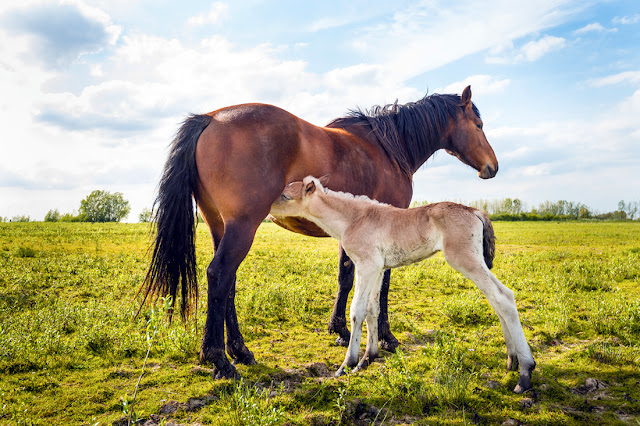
Weaning is the process by which a young animal transitions from its mother’s milk to solid food and becomes independent of nursing. In the case of horses, the timing of weaning can vary, but it typically occurs when the foal is around 4 to 6 months old. The exact timing depends on various factors, including the health of the mare, the condition of the foal, and management practices.
Here are some key points about the weaning process for baby horse diet:
- Natural Weaning: In a natural setting, foals begin to nibble on solid food, such as grass or hay, alongside their mother’s milk as early as a few weeks of age. As they grow older, they gradually reduce their reliance on milk and increase their consumption of solid food.
- Staged Weaning: In many domestic horse management scenarios, weaning is a staged process. This can involve separating the foal from the mare for increasing periods of time until they are eventually completely separated. This gradual approach helps both the mare and the foal adjust to the separation.
- Health and Development: The decision to wean a foal is often based on its health, growth, and development. If the foal is healthy, eating solid food, and showing signs of independence, it may be a suitable time for weaning.
- Mare’s Condition: Weaning can also be influenced by the condition of the mare. If the mare is in poor health, pregnant again, or having difficulty maintaining body condition while nursing, it may be advisable to wean the foal earlier.
- Environmental Factors: The environment in which the horses are kept also plays a role. In some cases, horses are kept in situations where it is more convenient to wean them earlier or later.
- Socialization: Foals often form strong bonds with their mothers, so the weaning process should consider the social aspects of the foal’s development. It’s essential to provide the foal with companionship, whether from other foals or adult horse facts, to help ease the transition.
Weaning should be done with care to minimize stress on both the mare and the foal. Proper nutrition and management practices, along with monitoring the health and behavior of the foal during the weaning process, are crucial for a successful transition to independence.
Also, Read More: What does a King Cobra Eat?
Can You Ride A Baby Horse?

Riding a baby horse, also known as a foal, is generally not recommended. Foals are very young and their bodies are still developing. horse riding a foal can put excessive weight and stress on their developing bones, joints, and muscles, potentially causing long-term damage.
Horses, like humans, go through various stages of physical development, and it’s important to allow them to grow and mature before introducing the added weight and strain of a rider. Most horses are not started under saddle until they are at least two years old, and some breeds may need even more time.
horse riding a foal can also pose safety risks. Young horses are often more unpredictable and less experienced with handling and training. Attempting to ride a baby horse can lead to accidents and injuries for both the rider and the horse.
Proper horse training involves gradually introducing the horse to new experiences, including being ridden, and ensuring that they are physically and mentally ready for the demands of carrying a horse riding. It’s essential to follow ethical and humane practices when working with horses to promote their well-being and prevent harm.
Can You Breed Young Horses?
Yes, it is possible to breed young horses, but it’s important to clarify what is meant by “young horses.” Horses typically reach sexual maturity at different ages, depending on their breeds horses and individual development. In general, a mare female horse can start breeding as early as 18 months to 2 years of age, but it’s often recommended to wait until they are at least 3 years old.
Breeding a young horse involves the mating of a stallion male horse and a mare. Here are some key points to consider:
- Maturity: Both the mare and stallion should be physically and sexually mature before breeding. Breeding too early can pose health risks to the young mare and may lead to complications during pregnancy and foaling.
- Health: The health of both the mare and stallion is crucial for successful breeding. Regular veterinary check-ups, vaccinations, and a balanced diet are essential to ensure the well-being of the animals.
- Genetic Considerations: Breeders often consider the genetic traits and lineage of both the mare and stallion to produce offspring with desirable characteristics. This is a critical aspect of horse breeding, especially in contexts such as horse racing, where specific traits are highly valued.
- Reproductive Soundness: Before horse breeds, both the mare and stallion should undergo reproductive examinations to ensure they are reproductively sound. This may include evaluating the mare’s estrous cycle and confirming the stallion’s fertility.
- Foaling Preparation: Once the mare is pregnant, it’s important to provide proper care and nutrition throughout the gestation period. Adequate facilities for foaling should be prepared, and close monitoring is necessary as the due date approaches.
- Weaning: After the foal is born, there’s a process called weaning, during which the foal is gradually separated from its mother and learns to eat solid food. Weaning is typically done when the foal is several months old.
It’s essential to approach horse breeding responsibly and ethically, ensuring the health and well-being of both the mare and foal. Working with experienced veterinarians and breeders can provide valuable guidance throughout the breeding process. Keep in mind that the decision to horse breeds should be made with careful consideration of the resources, time, and expertise required for responsible horse husbandry.
Why Are My Mare’s Udders So Full?
There are several reasons why a mare’s udders may appear full. Here are some possible explanations:
- Pregnancy: If your mare is pregnant, her udders will naturally become full as part of the preparation for lactation. As the pregnancy progresses, the udder enlarges due to an increase in blood flow and the development of mammary glands.
- Foaling Soon: As a mare gets closer to foaling, her udders will become even fuller. This is a sign that her body is getting ready to produce milk for the upcoming foal.
- False Pregnancy (Phantom Pregnancy): Sometimes, mares may exhibit signs of pregnancy even when they are not actually carrying a foal. This can include changes in the udder, such as enlargement and filling. This is more common in some mares than others.
- Edema: Edema, or fluid retention, can occur in the udders for various reasons. It might be due to changes in diet, weather conditions, or other health issues. Edema can cause the udders to swell and feel firm.
- Hormonal Changes: Hormonal fluctuations, whether due to pregnancy, the estrous cycle, or other factors, can influence the size and appearance of a mare’s udders.
- Mastitis: Mastitis is an inflammation of the mammary glands, often caused by bacterial infection. This can lead to swelling, redness, and heat in the udders. It’s essential to monitor for signs of discomfort, heat, or abnormal discharge, as mastitis requires veterinary attention.
- Diet and Nutrition: Changes in the mare’s diet or nutritional intake can also impact the udder’s appearance. An inadequate diet or sudden changes in nutrition may lead to edema or affect the udder’s overall condition.
If you are uncertain about the cause of your mare’s full udders or if you notice any signs of discomfort or abnormal behavior, it is crucial to consult with a veterinarian. They can perform a thorough examination and provide guidance based on your mare’s specific situation.
What Is Gelding When Are Male Baby Horses Gelded?
Gelding is the term used to describe the castration of male horse facts. Castration is the removal of the testicles, which are the male reproductive organs, usually to make a horse more manageable and suitable for certain purposes, such as riding or work. A horse that has been gelded is called a gelding.
Gelding is typically performed on male horses at a young age, usually between six months and two years old, although the exact timing can vary. The procedure is often done when the horse is still a foal, and it is considered a routine and relatively simple surgical procedure.
There are several reasons why owners choose to geld male horses:
- Behavioral reasons: Gelding is often done to make a male horse more manageable. Intact (non-gelded) male horse facts, known as stallions, can be more aggressive, territorial, and distractible, especially around mares (female horses) in estrus. Gelding can help reduce these behaviors, making the horse easier to handle and work with.
- Safety: Gelding is also done for safety reasons, both for the horse and the people handling the horse. Stallions can be more unpredictable and may pose a higher risk of injury to themselves and others.
- Conformation: In some cases, owners may choose to geld a male horse if it doesn’t meet the desired conformation or performance standards for breeding purposes.
The procedure is usually performed by a veterinarian and involves the removal of the testicles through a small incision. After the surgery, the horse is given time to recover, and the owner typically monitors the horse facts for any signs of complications.
It’s important to note that while gelding is a common practice, it is a surgical procedure and should be undertaken with proper consideration of the horse’s health, age, and intended use. Additionally, not all male horses are gelded, and some may be left intact for breeding purposes if they possess desirable traits and conform to breeding standards.
Common Problems In Baby Horses?
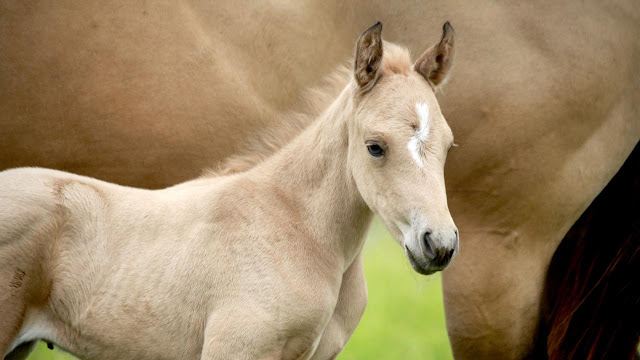
Baby horses, also known as foals, can face various common problems that require attention from horse owners or caretakers. Here are some common issues:
- Navel Infections (Umbilical Infections): Foals can develop infections in their umbilical stump shortly after birth. Keeping the area clean and dry is crucial to prevent infections.
- Joint Ill (Septic Arthritis): This is an infection that can occur in a foal’s joints, often through the umbilical vein. Signs include lameness, swelling, and pain. Prompt veterinary attention is necessary.
- Diarrhea: Foals are susceptible to diarrhea, which can be caused by various factors, including changes in diet, stress, or infectious agents. Dehydration is a concern with diarrhea, so it’s important to monitor and address the issue promptly.
- Respiratory Infections: Foals can develop respiratory infections, especially if they are housed in crowded or damp conditions. Signs include coughing, nasal discharge, and lethargy.
- Navicular Disease: This is a common lameness issue in horses, and while it typically affects older horses, foals can also develop related issues. Proper nutrition and hoof care are important for preventing such problems.
- Angular Limb Deformities: Foals may experience growth-related limb deformities, where the limbs appear crooked or misshapen. These can sometimes correct themselves as the foal grows, but severe cases may require veterinary intervention.
- Colic: While colic is more commonly associated with adult horses, foals can also experience abdominal pain. Causes may include changes in diet, intestinal obstructions, or gas buildup.
- Parasites: Foals are susceptible to internal parasites, such as worms, which can impact their overall health. A deworming program should be implemented with guidance from a veterinarian.
- Teething Troubles: Foals go through a teething phase, and this process can be uncomfortable for them. Providing appropriate items for them to chew on can help alleviate some of the discomfort.
- Failure of Passive Transfer (FPT): This occurs when a foal does not receive an adequate amount of antibodies from the mare’s colostrum. FPT can leave the foal susceptible to infections, so ensuring proper colostrum intake is crucial.
It’s important for horse owners to work closely with a veterinarian to monitor the health and development of foals, addressing any issues promptly to ensure they grow into healthy adult horses. Regular veterinary check-ups, a balanced diet, proper hygiene, and a good management plan contribute significantly to the well-being of baby horses.
How To Care For A Baby Horse?
Caring for a baby horse, also known as a foal, involves several key aspects, including nutrition, healthcare, socialization, and training. Here’s a comprehensive guide on how to horse care for a baby horse:
- Nutrition Milk: Foals typically start nursing shortly after birth. Ensure that the foal receives its mother’s milk, known as colostrum, during the first few hours of life. This is crucial for the foal’s immune system.
- Mare’s Milk Replacer: If the mare is unable to provide enough milk or if the foal is orphaned, you may need to provide a commercial mare’s milk replacer, following the manufacturer’s instructions.
Feeding Schedule
- Frequent Feedings: Foals have small stomachs, so they need to be fed frequently. They may initially nurse every 1-2 hours, gradually reducing the frequency as they grow.
- Introduce Solid Feed: Introduce solid feed gradually around 2-3 weeks of age. Start with high-quality foal pellets, and later introduce good-quality hay.
Healthcare
- Vaccinations: Consult with a veterinarian to develop a vaccination schedule for the foal to protect against common diseases.
- Deworming: Implement a deworming program based on your vet’s recommendations.
- Hoof Care: Regular hoof trimming is essential to ensure healthy hoof development.
Socialization
- Interaction with Other Horses: Foals are social animals, and interaction with other horses is crucial for their mental and emotional well-being. Allow them to spend time with other horses, including their mother.
- Human Interaction: Spend time with the foal to establish a bond. Gentle handling from an early age hlps in the training process.
Training
- Basic Ground Manners: Teach the foal basic ground manners, such as leading, standing quietly, and picking up their hooves.
- Desensitization: Introduce the foal to various stimuli, including grooming tools, blankets, and other objects, to desensitize them and build confidence.
- Positive Reinforcement: Use positive reinforcement techniques, such as treats and praise, to encourage good behavior.
Shelter and Environment
- Stable or Shelter: Provide a safe and comfortable shelter, especially during extreme weather conditions.
- Turnout: Allow the foal access to a secure turnout area where they can move and play.
Monitoring Health
- Regular Checkups: Schedule regular veterinary checkups to monitor the foal’s growth and address any health concerns promptly.
- Temperature and Vital Signs: Learn how to monitor the foal’s temperature, pulse, and respiratory rate to detect early signs of illness.
Weaning
Gradual Process: Weaning is the process of separating the foal from its mother’s milk. This is usually done gradually, starting around 4-6 months of age. Provide a companion for the foal during the weaning process.
Remember that each foal is unique, and adjustments may be needed based on individual needs and circumstances. Regular consultation with a veterinarian is essential for the health and well-being of the baby horse.
Frequently Asked Questions:
Q: How do you Differentiate Between Male and Female Foals?
Ans: Male foals are referred to as colts, while female foals are called fillies.
Q: At what Age is a Foal Typically Born?
Ans: Foals are usually born after a gestation period of about 11 months. The typical range is 320 to 360 days.
Q: Can Foals Stand and Walk Shortly After Birth?
Ans: Yes, foals are usually able to stand and walk within a few hours after birth. This is crucial for their survival in the wild.
Q: What do you Feed a Baby Horse?
Ans: Foals initially rely on their mother’s milk, which provides essential nutrients. As they grow, a gradual introduction to solid food such as hay and grain becomes part of their diet.
Q: When do Foals Start Eating Solid Food?
Ans: Foals may start nibbling on solid food within a few weeks of birth, but they continue to primarily rely on their mother’s milk for the first few months.

